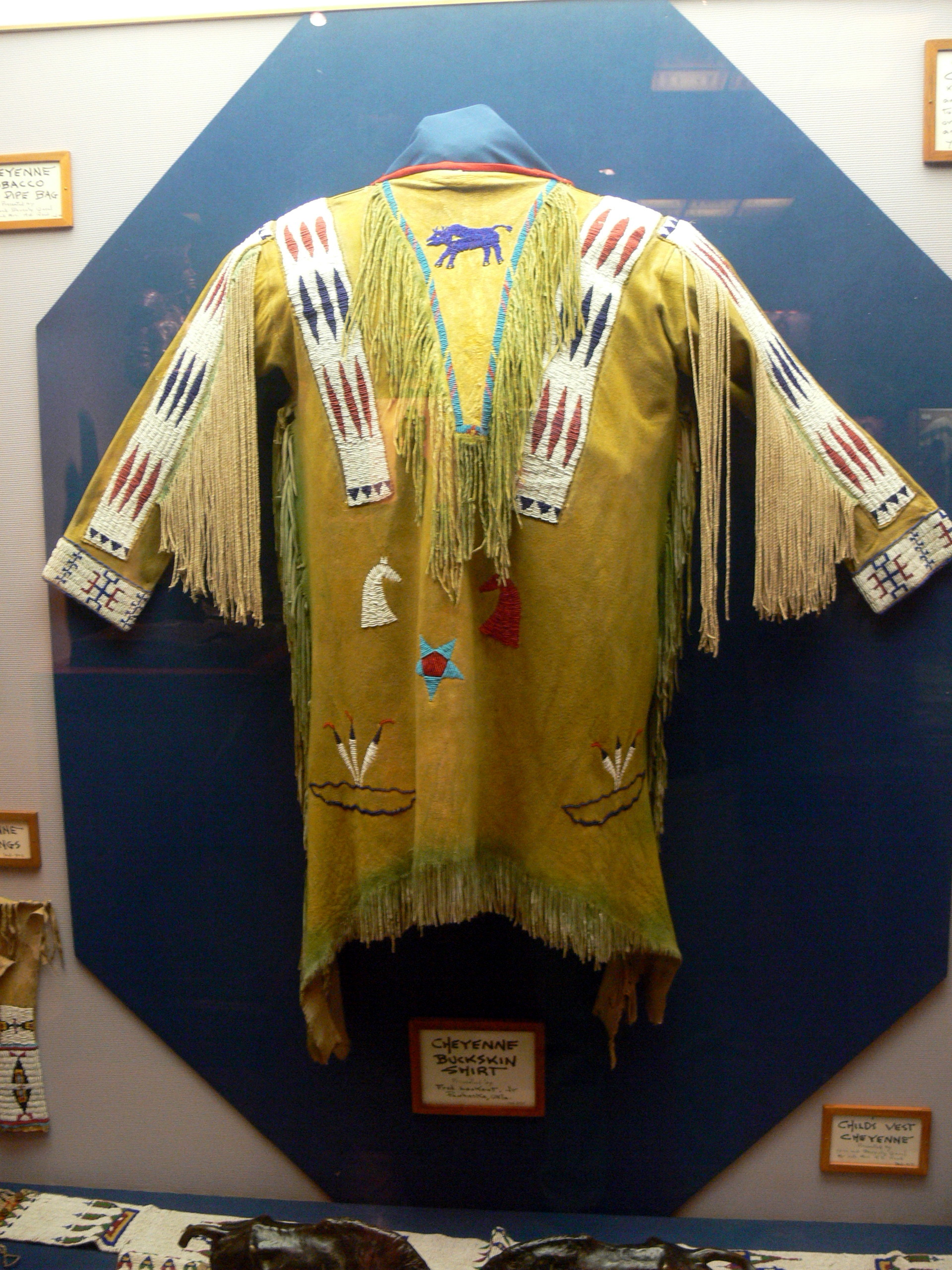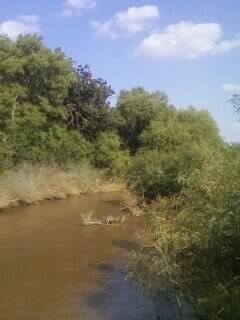|
Tall Bull
Tall Bull (1830 - July 11, 1869) (''Hotóa'ôxháa'êstaestse'') was a chief of the Cheyenne Dog Soldiers. Of Cheyenne and Lakota parentage, like some of the other Dog Soldiers by that time, he identified as Cheyenne.Hyde 1968, p. 339. He was shot and killed in the Battle of Summit Springs in Colorado by Major Frank North, leader of the Pawnee Scouts. Leadership Tall Bull was a major Southern Cheyenne Chief, war chief and Dog Soldier leader. In 1864, under his leadership he had approximately 500 people following him in the eastern Colorado and western Kansas and Nebraska area. He participated in the 1864-65 Arapaho-Cheyenne War, the retaliation that followed the Sand Creek massacre, but gave up the fight after seeing the futility of winning the war. In 1868, he participated in the Beecher Island battle. During the battle he warned Roman Nose not to go into battle until he fixed his broken medicine and to do it quickly so that he could join the fight. During 1869, Tall Bull w ... [...More Info...] [...Related Items...] OR: [Wikipedia] [Google] [Baidu] |
Cheyenne
The Cheyenne ( ) are an Indigenous people of the Great Plains. Their Cheyenne language belongs to the Algonquian language family. Today, the Cheyenne people are split into two federally recognized nations: the Southern Cheyenne, who are enrolled in the Cheyenne and Arapaho Tribes in Oklahoma, and the Northern Cheyenne, who are enrolled in the Northern Cheyenne Tribe of the Northern Cheyenne Indian Reservation in Montana. The Cheyenne comprise two Native American tribes, the Só'taeo'o or Só'taétaneo'o (more commonly spelled as Suhtai or Sutaio) and the Tsétsêhéstâhese (also spelled Tsitsistas, The term for the Cheyenne homeland is ''Tsiihistano''. Language The Cheyenne of Montana and Oklahoma speak the Cheyenne language, known as ''Tsêhésenêstsestôtse'' (common spelling: Tsisinstsistots). Approximately 800 people speak Cheyenne in Oklahoma. There are only a handful of vocabulary differences between the two locations. The Cheyenne alphabet contains 14 letters. Th ... [...More Info...] [...Related Items...] OR: [Wikipedia] [Google] [Baidu] |
White Butte
White Butte is the highest natural point in the U.S. state of North Dakota. At an elevation of 3,506 ft (1,069 m), it is a prominent butte in Slope County, in the Badlands of the southwestern part of the state. It is located east of U.S. 85 and about south of Amidon. The nearest town is Amidon, about seven miles to the northwest. The summit is located within the boundaries of the Little Missouri National Grassland and is about south of Theodore Roosevelt National Park. It is on private property, owned by the Dennis family who live nearby. At the parking area, one mile due north of the trailhead, the family maintains a small mailbox-like receptacle for donations to help maintain the area, and requests a $5 contribution from visitors. From the trailhead, the trail itself is a 4-mile round trip. The Killdeer Mountains, to the north, rise roughly from their foothills, but are shorter than White Butte. none, Looking to the west from the trail. See also *Outline of ... [...More Info...] [...Related Items...] OR: [Wikipedia] [Google] [Baidu] |
Cheyenne People
The Cheyenne ( ) are an Indigenous people of the Great Plains. Their Cheyenne language belongs to the Algonquian languages, Algonquian language family. Today, the Cheyenne people are split into two federally recognized tribe, federally recognized nations: the Southern Cheyenne, who are enrolled in the Cheyenne and Arapaho Tribes in Oklahoma, and the Northern Cheyenne, who are enrolled in the Northern Cheyenne Tribe of the Northern Cheyenne Indian Reservation in Montana. The Cheyenne comprise two Native Americans in the United States, Native American tribes, the Só'taeo'o or Só'taétaneo'o (more commonly spelled as Suhtai or Sutaio) and the Tsétsêhéstâhese (also spelled Tsitsistas, The term for the Cheyenne homeland is ''Tsiihistano''. Language The Cheyenne of Montana and Oklahoma speak the Cheyenne language, known as ''Tsêhésenêstsestôtse'' (common spelling: Tsisinstsistots). Approximately 800 people speak Cheyenne in Oklahoma. There are only a handful of vocabulary d ... [...More Info...] [...Related Items...] OR: [Wikipedia] [Google] [Baidu] |
Great Plains
The Great Plains (french: Grandes Plaines), sometimes simply "the Plains", is a broad expanse of flatland in North America. It is located west of the Mississippi River and east of the Rocky Mountains, much of it covered in prairie, steppe, and grassland. It is the southern and main part of the Interior Plains, which also include the tallgrass prairie between the Great Lakes and Appalachian Plateau, and the Taiga Plains and Boreal Plains ecozones in Northern Canada. The term Western Plains is used to describe the ecoregion of the Great Plains, or alternatively the western portion of the Great Plains. The Great Plains lies across both Central United States and Western Canada, encompassing: * The entirety of the U.S. states of Kansas, Nebraska, North Dakota and South Dakota; * Parts of the U.S. states of Colorado, Iowa, Minnesota, Missouri, Montana, New Mexico, Oklahoma, Texas and Wyoming; * The southern portions of the Canadian provinces of Alberta, Saskatchewan and Manitoba. ... [...More Info...] [...Related Items...] OR: [Wikipedia] [Google] [Baidu] |
Black Kettle
Black Kettle (Cheyenne: Mo'ohtavetoo'o) (c. 1803November 27, 1868) was a prominent leader of the Southern Cheyenne during the American Indian Wars. Born to the ''Northern Só'taeo'o / Só'taétaneo'o'' band of the Northern Cheyenne in the Black Hills of present-day South Dakota, he later married into the ''Wotápio / Wutapai'' band (one mixed Cheyenne-Kiowa band with Lakota Sioux origin) of the Southern Cheyenne. Black Kettle is often remembered as a peacemaker who accepted treaties with the U.S. government to protect his people. On November 27, 1868, while attempting to escape the Battle of Washita River with his wife, he was shot and killed by soldiers of the U.S. 7th Cavalry. Early life Black Kettle was born around 1803 in South Dakota into the Cheyenne Nation. Little is known of Black Kettle's life prior to 1854, when he was made a chief of the Council of Forty-four, the central government of the Cheyenne tribe. The Council met regularly at the Sun Dance gatherings, where ... [...More Info...] [...Related Items...] OR: [Wikipedia] [Google] [Baidu] |
Winfield Scott Hancock
Winfield Scott Hancock (February 14, 1824 – February 9, 1886) was a United States Army officer and the Democratic nominee for President of the United States in 1880. He served with distinction in the Army for four decades, including service in the Mexican–American War and as a Union general in the American Civil War. Known to his Army colleagues as "Hancock the Superb," he was noted in particular for his personal leadership at the Battle of Gettysburg in 1863. His military service continued after the Civil War, as Hancock participated in the military Reconstruction of the South and the Army's presence at the Western frontier. Hancock's reputation as a war hero at Gettysburg, combined with his status as a Unionist and supporter of states' rights, made him a potential presidential candidate. When the Democrats nominated him for President in 1880, he ran a strong campaign, but was narrowly defeated by Republican James A. Garfield. Hancock's last public service involved the ... [...More Info...] [...Related Items...] OR: [Wikipedia] [Google] [Baidu] |
Edward W
Edward is an English given name. It is derived from the Anglo-Saxon name ''Ēadweard'', composed of the elements '' ēad'' "wealth, fortune; prosperous" and '' weard'' "guardian, protector”. History The name Edward was very popular in Anglo-Saxon England, but the rule of the Norman and Plantagenet dynasties had effectively ended its use amongst the upper classes. The popularity of the name was revived when Henry III named his firstborn son, the future Edward I, as part of his efforts to promote a cult around Edward the Confessor, for whom Henry had a deep admiration. Variant forms The name has been adopted in the Iberian peninsula since the 15th century, due to Edward, King of Portugal, whose mother was English. The Spanish/Portuguese forms of the name are Eduardo and Duarte. Other variant forms include French Édouard, Italian Edoardo and Odoardo, German, Dutch, Czech and Romanian Eduard and Scandinavian Edvard. Short forms include Ed, Eddy, Eddie, Ted, Teddy and Ned. Pe ... [...More Info...] [...Related Items...] OR: [Wikipedia] [Google] [Baidu] |
Roman Nose
Roman Nose ( – September 17, 1868), also known as Hook Nose ( chy, Vóhko'xénéhe, also spelled Woqini and Woquini), was a Native Americans in the United States, Native American of the Northern Cheyenne. He is considered to be one of, if not the greatest and most influential warriors during the Plains Indian War of the 1860s. Born during the prosperous days of the fur trade in the 1820s, he was called Môséškanetsénoonáhe ("Bat") as a youth. He later took the warrior name Wokini, which the whites rendered as Roman Nose. Considered invincible in combat, this fierce warrior distinguished himself in battle to such a degree that the U.S. military mistook him for the Chief of the entire Cheyenne nation. Biography Hook Nose was born around 1830 and was a Northern Suhtai, a band within the Northern Cheyenne tribe. A common mistake is to confuse him with a supposed son of the Minniconjou Lakota Sioux Lone Horn and brother of Spotted Elk and Touch the Clouds called Roman Nose. Fo ... [...More Info...] [...Related Items...] OR: [Wikipedia] [Google] [Baidu] |
Dog Soldiers
The Dog Soldiers or Dog Men (Cheyenne: ''Hotamétaneo'o'') are historically one of six Cheyenne military societies. Beginning in the late 1830s, this society evolved into a separate, militaristic band that played a dominant role in Cheyenne resistance to the westward expansion of the United States in the area of present-day Kansas, Nebraska, Colorado, and Wyoming, where the Cheyenne had settled in the early nineteenth century. After nearly half the Southern Cheyenne died in the cholera epidemic of 1849, many of the remaining ''Masikota'' band joined the Dog Soldiers. It effectively became a separate band, occupying territory between the Northern and Southern Cheyenne. Its members often opposed policies of peace chiefs such as Black Kettle. In 1869 United States Army forces killed most of the band in the Battle of Summit Springs in Colorado Territory. The surviving Cheyenne societies became much smaller and more secretive in their operations. The twenty-first century has ... [...More Info...] [...Related Items...] OR: [Wikipedia] [Google] [Baidu] |
Beecher Island Battleground
Beecher Island is a sandbar located along the lower course of the Arikaree River, a tributary of the North Fork of the Republican River near Wray in Yuma County, Colorado. The site is notable for having been the scene of an 1868 armed conflict between elements of the United States Army and several of the Plains Indian tribes. The island was named for Lt. Fredrick Henry Beecher of the 3rd Infantry (nephew of Henry Ward Beecher and veteran of the Battle of Gettysburg), one of the heroes of the engagement who was killed during what became known as the Battle of Beecher Island. The "island" and the courses of the river have been modified by several floods since 1868. The Battle of Beecher Island was fought along the Arickaree Fork of the Republican River with concentrated fighting on a small island. A few willow trees stood on the island; however, the banks on either side of the river were believed to have had minimal tree growth. Bluffs rise gently from the course of the river. T ... [...More Info...] [...Related Items...] OR: [Wikipedia] [Google] [Baidu] |


.jpg)


